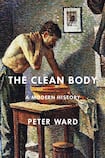
Louis XIV became king of France as a toddler in 1643 and ruled for an astounding 72 years. More astonishing, perhaps, is the number of times the Sun King bathed during his long reign: twice. When he was in his twenties and suffered convulsions, doctors prescribed bathing as a form of therapy; the king, however, quickly rejected their advice. The baths, he complained, left him with severe headaches.
The monarch who built the opulent Palace of Versailles and transformed France into a military powerhouse stuck with a hygienic routine that was rigorous for the times – after a daily rubdown from his servants, he rinsed his hands in scented water and, every other day, wiped his face with a moistened towel. To Louis and his fellow 17th-century aristocrats, being clean required frequent changes of clothing throughout the day, not soap and water. “The cleanliness of our linen and its abundance,” noted the French writer Charles Perreault in 1688, “are worth more than all the baths in the world.”
Canadian academic Peter Ward explores the three-centuries-plus journey from superficial royal wash-ups to our germ-obsessed, squeaky-clean world in The Clean Body: A Modern History, an engrossing book that reveals our ancestors’ dirty secrets and explores how we cleaned up our act. We’ve come a long way from the days of Samuel Pepys, who was as water-averse as his contemporary in Versailles; the famous London diarist reluctantly dipped into a hot bath in 1664 at the insistence of his wife, who refused to sleep with him until he did.
These and many other tidbits enliven this investigation of our emergence from our soiled, lice-infested past. Ward limits his inquiries to developments in Europe and North America, and draws on an array of sources – medical texts, advertisements, paintings, novels and even architectural blueprints – to document the western world’s changing attitudes toward grime and hygiene.
For centuries, the terms “dirt poor” and the “great unwashed” were literally true. Among the masses, dirtiness was considered almost next to godliness – or an outward sign, at least, of robust health. People who bathed “live short lives,” warned an old French proverb, while in Provence, the folk mantra was, “Wash the hands often, the feet rarely, and the head never.” As recently as the 1880s, one French academic haughtily claimed that “the peasant…only bathes or washes himself when he falls in the water.” People swam and bathed in lakes and rivers during the summer months, but the prudishness of the times discouraged the public exposure of naked flesh, even in the countryside. When the German writer Goethe was a young man, he was pelted with stones after being caught skinny-dipping.
Seasonal bathing options
The poor in London, Paris and other slum-blighted cities were denied these seasonal bathing options. Tenements were crowded, offering no space for the privacy needed to properly wash and bathe, and few people seemed to care. In the 1830s a Lancashire coal miner reported that his coworkers and neighbours never washed parts of their bodies that could not be seen – “their legs and bodies,” he assured a researcher surveying working-class living conditions, “are as black as your hat.”
Being clean cost money. Deliveries of fresh water were expensive and only the wealthy and middle-class social climbers could afford to install running water in their homes. By 1900 barely three out of 100 households in Paris, New York and Chicago boasted a bathroom. London took the lead in building public baths, but there were only enough to serve a fraction of the populace. Bathing regularly became a marker of affluence and status – “a means of distinguishing,” Ward writes, “clean bourgeois bodies from the unclean ones of the lower ranks.”
The expansion of water and sewer services levelled the cleaning field, so to speak, making bathing accessible to ever-greater numbers of people. And other forces were at work. Epidemics and the discovery of disease-causing germs demonstrated the need for improved sanitation and personal cleanliness. At the same time, manufacturers of soaps and laundry detergents spread the gospel of clean bodies and fresh-washed clothes through advertisements (one early American brand, Babbitt’s Best Soap, was touted “as a civilising force”). By the Second World War, soap was so ubiquitous in daily life – and its manufacture consumed such a massive volume of oils and fats needed for war production – that it was rationed.
Ward, a retired history professor at the University of British Columbia, takes readers through the story of cleanliness with scholarly precision, but peppers his historical analysis with sharp insights, entertaining anecdotes and flashes of wry humour. Decades ago, he was startled to discover that his always-dapper grandfather had a dirty secret; as a young man on the still-untamed Canadian frontier, he had taken a bath no more than a couple of times a year. The remark, Ward notes, planted the idea for this book. Readers will be grateful that it did.
Dean Jobb’s next book recreates the crimes of Victorian-era serial killer Dr. Thomas Neill Cream, the Lambeth Poisoner (Algonquin Books, 2021). He teaches nonfiction writing at the University of King’s College in Halifax, Nova Scotia












